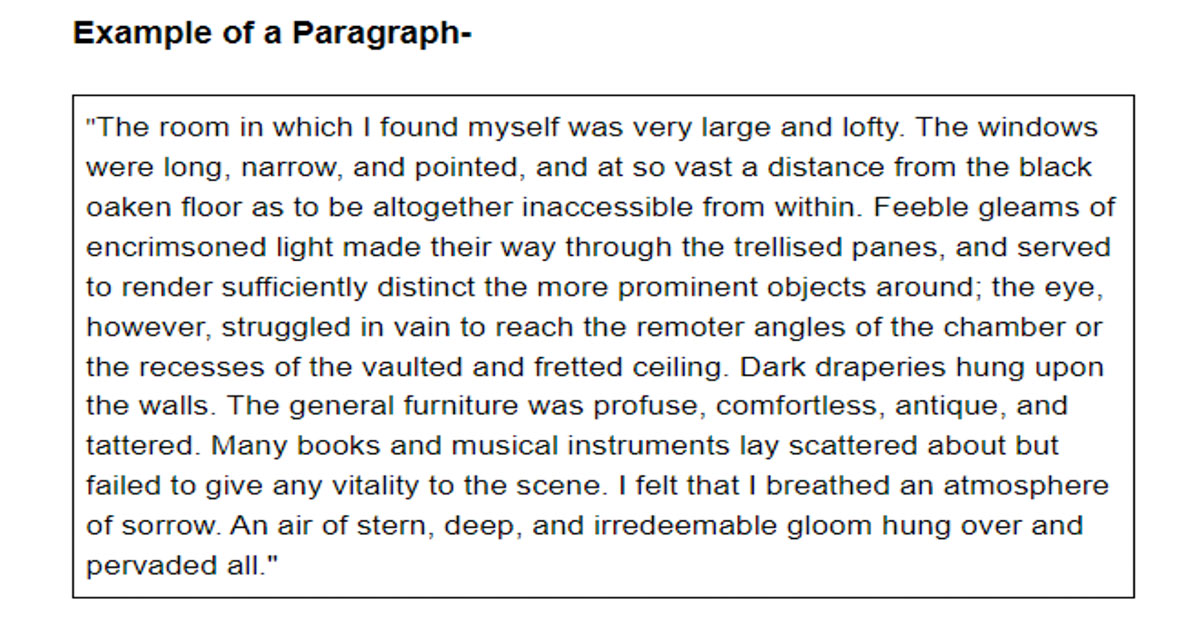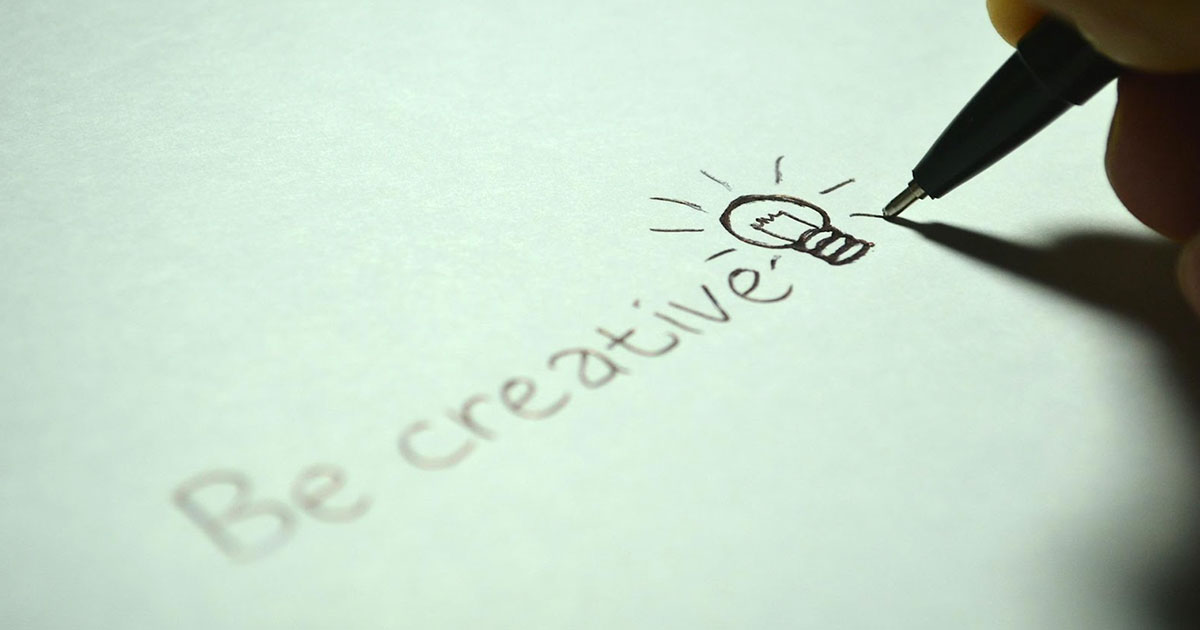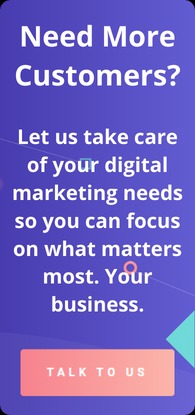
We write pretty much everything in paragraphs.
Whether it is an essay, answer, email, story, etc., it needs to be well-structured through paragraphs.
But why are paragraphs so important in writing?
The answer lies in their purpose.
Paragraphs are groups of sentences that are combined to explain something, give information, convince someone of your idea, or tell a story.
Overall, paragraphs complete writing and help in achieving a motto.
In this guide, we will share some tips for writing perfect paragraphs. Read on!
Structure of a Paragraph
A paragraph consists of the following sections:
- Topic sentence: The first line of the paragraph
- Supporting sentences: middle sentences of the paragraph
- Concluding sentences: the last line of the paragraph
A good paragraph is the one that comprises all these sections.
It is composed of a key/topic sentence, relevant supporting sentences, and a closing/transition sentence.
If you follow this structure, you can better keep your paragraph focused on a primary idea.
This helps in crafting a clear and concise image.

Need a Sales Funnel that Converts?
Struggling to turn clicks into customers?
A high-converting sales funnel could be the missing link. We’ll help you build a simple, straightforward, and effective funnel that guides your visitors step-by-step, so they take action, not just browse.
Best Way to Write a Paragraph
Remember, the rule to write a paragraph remains the same whether you’re writing a long or short paragraph.
That said, this is how you can write a perfect paragraph.
But there’s another way, quite popular these days: using AI tools.
There are paragraph writing or rewriting tools like paragraphrewriter.net that you can use to draft a perfect paragraph.
Paragraph Rewriter tools are smart enough to take care of the ingredients of a perfect paragraph.
You can use such tools to make your written paragraphs perfect or you can use these tools to draft a new version of any given paragraph.
Whether you use an AI tool or draft it manually, you must know the basics of writing a paragraph:
1. First Sentence Means Topic Sentence.
Try to make the first sentence of your paragraph your topic sentence.
This introduces the main idea the paragraph will cover, keeping your writing focused and organized.
This is how this rule is implemented in different writing genres and styles:
- Start with a question, interesting fact, or anecdote before discussing the thesis statement (the main idea of the essay).
- In stories or creative non-fiction, the first sentence sets the scene. Introduce a character or talk about a particular scene.
- Sometimes, a paragraph starts by referring back to the previous idea or scenario. This helps connect to the previous story before introducing something new.
When writing a paragraph, the first sentence should reflect the main idea.
Use clear, precise, and unambiguous words to convince and make the reader read further.
2. Add Middle Sentences to Provide Support

Use the middle sentences, also called the body sentences, to support the main idea you aim to convey in the key/first sentence.
There are various ways to do so:
- Provide more details, explanations, or examples to expand on the topic sentence.
- Include facts, statistics, and quotes from trustworthy sources to solidify the argument you have introduced in the topic sentence.
- Explain the different parts of the idea. Use cause and effect to explain how things connect with each other.
3. Make your Last Sentence a Conclusion/Transition
Use the end of a paragraph, typically the last conclusive line, to conclude your main idea.
You can also use it as a train of thought when moving to the first line of your next new paragraph.
Here are some ways to do so:
- Restate the main idea of the paragraph, potentially using different words to firm the point for the reader.
- End with a strong statement that highlights the significance of the information presented.
- Ask a question or offer an interesting comment.
- Use transition words or phrases (e.g., “however,” “furthermore,” “in contrast”) to showcase a shift in focus or direction for the reader.
Tips to Structure and Write Better Paragraphs
Think twice before you write
Don’t start writing if you haven’t established a clear structure and understanding of what you’ll answer in the paragraph.
Find answers to these questions:
- How will you answer?
- What options do you have to provide to support your hypothesis?
- How will you support your idea?
- What quotes and facts will you use for this?

Take a notebook and write down answers to all these questions.
Write in a way that you cover all the points.
Tip!
Use pointers (hints or prompts) to understand easily.
Choose your main idea.
Once you have answered all the questions and found all the information, decide on the main idea of your paragraph.
Tip!
Use thesaurus and dictionary to have some extra words in your reach to express your ideas.
Use the first sentence and middle sections, as told you earlier.
As stated earlier, use the first line of your paragraphs to tell your readers your central idea or what you are going to narrate in the paragraph.
Use the middle section to support your main idea discussed in the first line.
Make use of transitional words
Don’t forget to use transitional words.
These can help you combine different paragraphs into a unified theme.
Use phrases like “moreover” or “in addition” to comprehend how different paragraphs relate to each other.
Finalize your paragraph at the end
Whether you’re writing only a single paragraph, a whole essay, a story, etc., make sure to pass your writing through grammar-checking tools.
You should also use modern AI tools to find the readability score.
The whole process will go like this: submit your text to grammar-checking and readability-checking tools such as Grammarly, Hemingway Editor, etc.
Effective Techniques for Crafting Stronger Paragraphs
Improving paragraph writing skills takes time and effort, but anyone can become a better writer by developing strong writing habits and practicing different techniques.
Whether you are crafting blog posts, an academic essay, or a news article, focusing on sentence structure, word choice, and paragraph development will make a noticeable difference.
Below are some great ways to enhance your own writing and ensure clarity, coherence, and effectiveness in communication.
Develop a Simple Framework for Writing Paragraphs
A great writer follows a simple framework to ensure that every piece of writing flows smoothly.
Before starting a paragraph, ask yourself the following questions:
- What is the main argument or controlling idea of this paragraph?
- How does it connect to the previous or next section?
- What examples, evidence, or explanations can support it?
- What is the most logical way to conclude the thought?
Following this process makes it easier to create structured paragraphs, whether you are writing for content marketing, academic purposes, or even social media.
The best writers plan their writing projects in a particular order, ensuring every paragraph contributes to the larger piece.
Improve Your Sentence Structure and Length
One of the most effective ways to improve paragraph writing is by focusing on sentence structure and sentence length.
Many beginner writers struggle with either writing entire paragraphs as a single word-packed sentence or using overly short, choppy phrases.
A balance between short and long sentences keeps the reader engaged and ensures clarity.
A paragraph filled with big words, filler words, or overly complex sentences can have the opposite effect of what the writer intends; it makes the text harder to understand.
For example, Stephen King, one of the best writers in the world, advises against using unnecessary words that do not add value to the text.
Instead, choose words carefully to ensure concise, direct, and effective communication.
Active vs. Passive Voice in Paragraph Writing
Using an active voice instead of a passive voice is another great way to improve writing clarity.
In an active voice, the subject performs the action, making the sentence stronger and more direct. For example:
- Active voice: “The teacher explained the lesson clearly.”
- Passive voice: “The teacher clearly explained the lesson.”
While the passive voice is sometimes necessary in academic writing, it often makes sentences weaker and harder to read.
A good writer knows when to use each appropriately.
The Importance of Regular Reading and Analysis
One habit that sets apart a great writer from a mediocre writer is regular reading.
Reading high-quality texts; whether novels by Ernest Hemingway, academic papers, or expert blog posts, exposes writers to different writing styles, structures, and word choices.
Reading work by native speakers also helps English language learners understand how language naturally flows.
Additionally, analyzing different writing projects helps in recognizing common mistakes and learning how to avoid them in own writing.
Writing and Editing: A Two-Step Process
Good paragraph writing involves two major steps: drafting and editing.
Many beginner writers focus only on writing but neglect the editing process, which is just as crucial.
- First draft: Write freely without overthinking. Focus on getting ideas down.
- Editing: Use tools like Grammarly, Hemingway Editor, or Purdue University’s Online Writing Lab to refine sentence clarity, check English grammar, and improve overall readability.
For more thorough editing, working with a professional editor or participating in writing groups can be highly beneficial.
The Role of Transitional Words and Phrases
Good paragraphs are not just about structure; they also require smooth transitions between ideas.
Using transitional words like moreover, in addition, and on the other hand helps create logical connections between body paragraphs, making the text flow better.
For example:
- Weak transition: “Paragraph writing is important. It helps structure ideas.”
- Strong transition: “Paragraph writing is important. Moreover, it helps structure ideas in a logical and engaging way.”
Writing for Different Audiences
A great deal of paragraph writing success depends on understanding the target audience.
Writing an academic essay differs from writing for social media or content marketing.
Adjusting word choice, tone, and structure based on the reader ensures better engagement.
For instance:
- Academic writing requires a formal tone and precise language.
- Social media writing benefits from a conversational, engaging style.
- Content creation for search engines requires an emphasis on keywords and readability.
The Importance of Thorough Research
Whether writing an academic essay, blog post, or news article, conducting thorough research is essential.
A good essay is not just about opinions; it should be backed by facts, statistics, and expert insights.
Websites like Purdue University’s Online Writing Lab provide excellent resources for improving essay writing skills and structuring academic writing effectively.
Learning from the Best Writers
Aspiring writers can learn a great deal by studying the best writers in history.
Ernest Hemingway, for example, was known for his short, impactful sentences, while Stephen King emphasizes the importance of cutting unnecessary words to improve clarity.
Reading their works and analyzing how they build body paragraphs, use word choice, and structure arguments can help anyone become a better writer.
Writing Exercises to Improve Paragraphs
Practicing different writing styles is one of the most effective ways to enhance paragraph writing. Here are a few exercises:
- Rewrite entire paragraphs in different ways to see how structure affects meaning.
- Write about personal experiences using both active voice and passive voice to understand their differences.
- Summarize a news article in a few sentences, focusing on clarity and conciseness.
- Join writing groups where peers review each other’s work and offer feedback.
Avoiding Common Writing Mistakes
Many beginner writers struggle with common mistakes such as:
- Overuse of filler words like “very,” “really,” and “just.”
- Writing big words to sound impressive, which often leads to confusion.
- Lack of coherence in body paragraphs, making ideas seem disconnected.
- Ignoring the editing process, leading to avoidable grammar and clarity issues.
By recognizing these mistakes and taking steps to correct them, anyone can improve as a writer.
Conclusion
To improve your paragraph writing skills, the first thing you should do is to understand the structure and purpose of the paragraphs you’re writing.
Each paragraph should have a clear topic sentence, supporting sentences, and a concluding sentence.
Start with a strong topic sentence, provide supporting details or evidence, and end with a conclusion or transition to the next paragraph.
Use transitional words to connect ideas smoothly.
Plan your paragraph structure ahead and revise using grammar and readability tools for clarity.
Our Digital Marketing Services Have Helped Our Clients Increase Their Revenue!
“I highly recommend Brimar if your looking to grow your online business. You will be satisfied with the high level of expertise and high quality of services. It has helped my business grow by leaps and bounds.”
CEO

